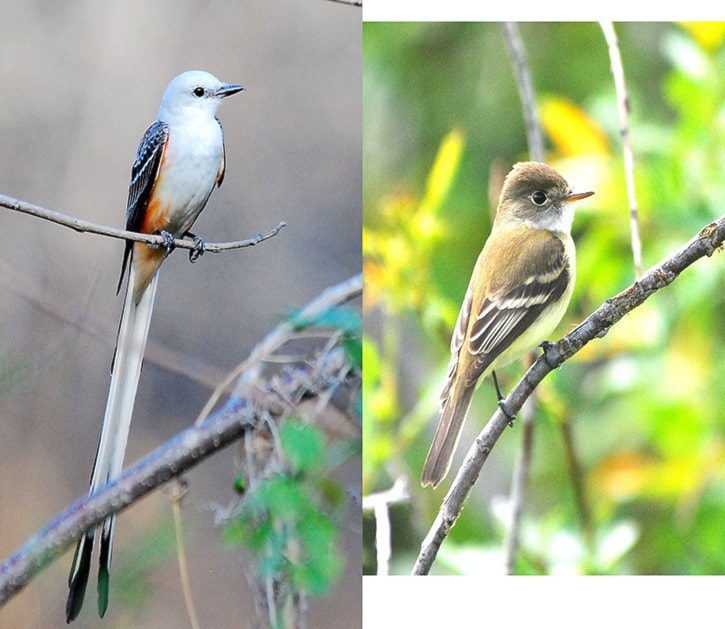There are many differences between the birds of tropical and subtropical regions, and those of more temperate places like B.C. One of the families in which differences show up quite prominently is with the flycatchers.
In B.C. we have 13 species and all but one or two of them are essentially grey- or brown-backed with white to grey undersides. The picture here is of a Willow Flycatcher and is typical of most northern flycatchers. The only real exception to this is the Western Kingbird. This resident of drier parts of the province, like the Okanagan, has a bright yellow breast and belly.
In contrast to this situation, the tropical flycatchers are varied and colourful. The flamboyant Scissor-tailed Flycatcher, pictured here, is perhaps the most striking example. The buffy orange flanks, the salmon pink underwings, and the long tail streamers make quite a statement when this bird is seen in flight!
Another example is the Vermilion Flycatcher. This little beauty has brilliant red body and head feathers; the back and wings are blackish-brown.
The Great Kiskadee is one of the largest North American flycatchers and is also colourful. The breast and belly are a very bright lemon-yellow colour; the head is boldly striped in black and white; and the back and wings are a rich chestnut brown.
The Ash-throated Flycatcher is a little less flashy, but still quite attractive. It also has a yellow belly, but is paler than that of the kiskadee, and the breast is grey.
And, similar to our Western Kingbird, the south has three other kingbirds with bright yellow undersides: Cassin’s, Tropical, and Couch’s.
Another group of birds that are well represented in the south, but not so in the north are the long-legged wading birds such as herons, storks and ibises.
In B.C. the only regularly occurring species are Great Blue Heron, Green Heron, American Bittern and Sandhill Crane. And even at that, the latter three are either limited in range or are very hard to find.
Here in south Texas there are 12 species in the heron family alone. Just on the golf course where we play three or four times a week, I have seen Great Egret, Snowy Egret, Cattle Egret, Great Blue Heron, Little Blue Heron, Tri-coloured Heron, and Black-crowned Night-Heron. Nearby we can add American Bittern, Yellow-crowned Night-Heron and Reddish Egret.
There are many other varied and colourful groups of birds in the subtropical south – next time I’ll describe some of the others.
